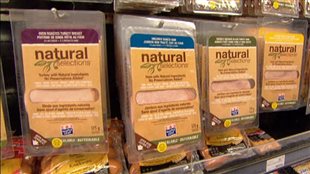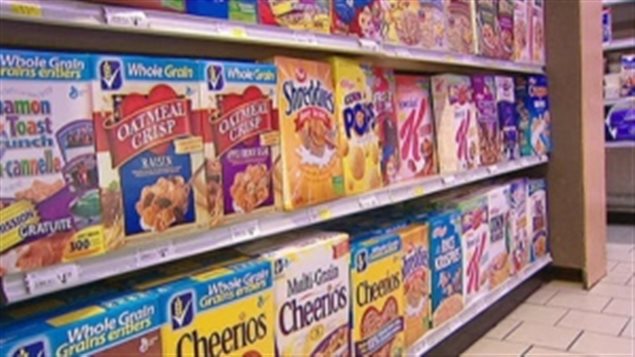The box of cereal on the store shelf has lovely pictures of fruit on it, but there may be no actual fruit in the cereal inside.
The container may say “natural fibre” boldly on the front, but carefully looking on the back at the ingredients, the fibre level may be very low.
Marketers and food scientists have consumers well targetted, and dieticians are advising consumers to be increasingly watchful
Vashti Verbowski is a registered dietitian and a spokesperson for the organization Dietitians of Canada.

Marketers know well what attracts consumers to their food products. The trend in the last fe years has been toward healthier options, so the marketing strategist use all kinds of strategies to lead consumers to think a product is “healthy”.
On the other hand food scientists at those same manufacturers carefully work on formulas adding fats, salt, and sugars as they know that appeals to consumers taste buds. There may also be a high level of preservatives and other “binders”
Children are often targets with the colourful pictures, knowing they will try to convince parents to buy the product with the “healthy” aspect helping that along in the parent’s minds.
The result is consumers who buy what they presume is healthy and what their taste buds tell them tastes good.
But the two are often at odds. High levels of sodium leads to high blood pressure and other problems, fats and sugars lead to the crisis in obesity.

On researcher compare two tablespoons of a popular chocolate flavour hazelnut spread, and a well-known common chocolate bar. The spread marketed as a healthy spread as it contains nuts, which are healthy, while the chocolate bar is a sweet snack only. In terms of protein, it turned out the two were essentially the same, yet you wouldn’t really give your child a chocolate bar every morning.
Flavoured yogurts for example may be perceived as being healthy, but may contain a high amount of sugar, and are less healthy than unadulterated yogurt.
Verbowski says people should carefully read the label. She notes for example that a high level of sugar in a product can be concealed in an ingredients list in all sorts of less obvious forms, each in small amounts thereby not raising concern, These include malts, syrups, molasses, and under stealthy names such as HFCS, invert sugar, fructose, lactose, sucrose, dextrose and maltose. But when several small amounts of sugar are added up, in can be quite considerable.

Verbowski also notes that with different “portions” as measurements for the contents, it makes it difficult to compare products.
If for example one yogurt says 3gms of fat in a 125gm serving, and the next says 8,5gms of fat in a 310gm serving, or when one company puts it in weight, while another uses percentage, it becomes very difficult for the consumer to judge which is healthier.
Dietitians say its always better to stay away from processed and manufactured foods as much as possible, but when not possible careful reading of the ingredients label is the next best alternative to avoid high levels of fats, sugars, salts, along with chemical preservatives and binding agents.







For reasons beyond our control, and for an undetermined period of time, our comment section is now closed. However, our social networks remain open to your contributions.